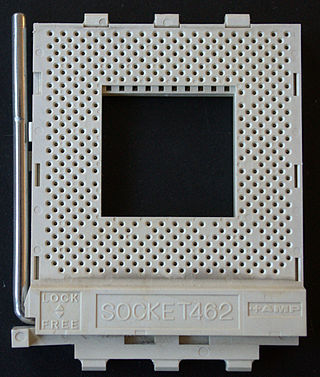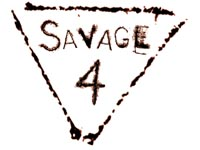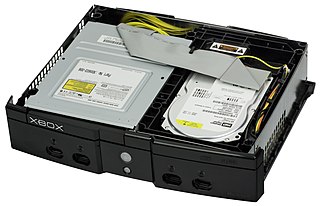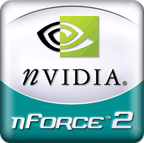
Double Data Rate Synchronous Dynamic Random-Access Memory is a double data rate (DDR) synchronous dynamic random-access memory (SDRAM) class of memory integrated circuits used in computers. DDR SDRAM, also retroactively called DDR1 SDRAM, has been superseded by DDR2 SDRAM, DDR3 SDRAM, DDR4 SDRAM and DDR5 SDRAM. None of its successors are forward or backward compatible with DDR1 SDRAM, meaning DDR2, DDR3, DDR4 and DDR5 memory modules will not work on DDR1-equipped motherboards, and vice versa.
Rambus DRAM (RDRAM), and its successors Concurrent Rambus DRAM (CRDRAM) and Direct Rambus DRAM (DRDRAM), are types of synchronous dynamic random-access memory (SDRAM) developed by Rambus from the 1990s through to the early 2000s. The third-generation of Rambus DRAM, DRDRAM was replaced by XDR DRAM. Rambus DRAM was developed for high-bandwidth applications and was positioned by Rambus as replacement for various types of contemporary memories, such as SDRAM. RDRAM is a serial memory bus.

The GeForce 2 series (NV15) is the second generation of Nvidia's GeForce line of graphics processing units (GPUs). Introduced in 2000, it is the successor to the GeForce 256.

In a computer system, a chipset is a set of electronic components on one or more integrated circuits that manages the data flow between the processor, memory and peripherals. The chipset is usually found on the motherboard of computers. Chipsets are usually designed to work with a specific family of microprocessors. Because it controls communications between the processor and external devices, the chipset plays a crucial role in determining system performance. Sometimes the term "chipset" is used to describe a system on chip (SoC) used in a mobile phone.

nForce is a motherboard chipset created by Nvidia originally for AMD Athlon and Duron, with later revisions also supporting contemporary Intel processors. The chipset shipped in 3 varieties; 220, 415, and 420. 220 and 420 are very similar with each having the integrated GPU, but the 220 only has a single channel of memory available whereas 420 has the 128-bit TwinBank design. The 415 variant again has the dual-channel memory interface, but has no integrated graphics.

In computing, a northbridge is a microchip that comprises the core logic chipset architecture on motherboards to handle high-performance tasks, especially for older personal computers. It is connected directly to a CPU via the front-side bus (FSB), and is usually used in conjunction with a slower southbridge to manage communication between the CPU and other parts of the motherboard.

Socket A is a zero insertion force pin grid array (PGA) CPU socket used for AMD processors ranging from the Athlon Thunderbird to the Athlon XP/MP 3200+, and AMD budget processors including the Duron and Sempron. Socket A also supports AMD Geode NX embedded processors. It compliments the prior Slot A CPU interface used in some Athlon Thunderbird processors. The front-side bus frequencies supported for the AMD Athlon XP and Sempron are 133 MHz, 166 MHz, and 200 MHz. Socket A supports 32-bit CPUs only.

The nForce4 is a motherboard chipset released by Nvidia in October 2004. The chipset supports AMD 64-bit processors and Intel Pentium 4 LGA 775 processors.

Geode is a series of x86-compatible system-on-a-chip (SoC) microprocessors and I/O companions produced by AMD that was targeted at the embedded computing market.

The nForce3 chipset was created by Nvidia as a Media and Communications Processor. Specifically, it was designed for use with the Athlon 64 processor.

Savage was a product-line of PC graphics chipsets designed by S3.

The Radeon Xpress 200 is a computer chipset released by ATI. The chipset supports AMD 64-bit processors as well as supporting Intel Pentium 4, Pentium D and Celeron processors. Additionally, it includes support for DDR400 RAM and DDR-2 667 RAM on the Intel Edition.
The Xpress 3200 is a revision of the Xpress 200 computer chipset released by ATI. The chipset supports AMD64 processors for Socket 939 and Socket AM2.
The nForce 600 chipset was released in the first half of November 2006, coinciding with the GeForce 8 series launch on November 8, 2006. The nForce 600 supports Intel's LGA 775 socket and AMD's Quad FX platform and replaces the nForce 500 series.
The AMD 700 chipset series is a set of chipsets designed by ATI for AMD Phenom processors to be sold under the AMD brand. Several members were launched in the end of 2007 and the first half of 2008, others launched throughout the rest of 2008.
The IntelliStation is a family of workstations developed by IBM and first released in March 1997 as the follow-on to the PC Series 360 and 365. Certain IntelliStation M Pro Series were near hardware identical to low end IBM Netfinity 1000 Series network servers. In February 2002, POWER processor-based workstations, previously sold directly under the eServer pSeries brand, were also placed under the IntelliStation umbrella.

The Intel 850 chipset was the first chipset available for the Pentium 4 processor, and was simultaneously released in November 2000. It consists of an 82850 memory controller hub and an 82801BA I/O controller hub.

The Xbox technical specifications describe the various components of the Xbox video game console.













